Clare Lattin and Tom Hill celebrate simple, seasonal food in their constantly shifting menus. They overflow with colourful, comforting dishes which hum with the memories of their travels around the Mediterranean, the Middle East and South East Asia. Here they talk brunch and natural wines.
25 August, 2016
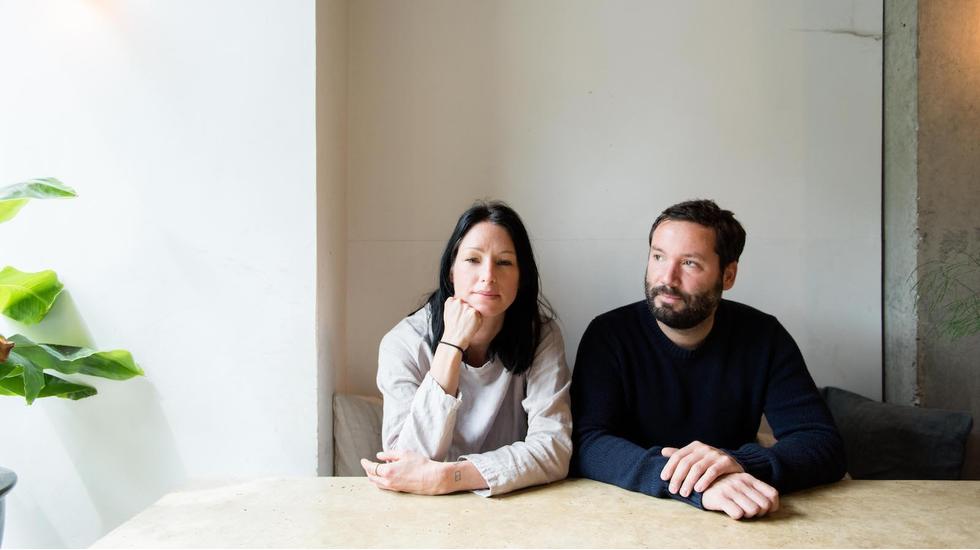
Living
around the corner from Rawduck is not always a good thing. Whenever it comes
to planning drinks, dinner or brunch, we have every intention of
booking somewhere new. And then we remember Rawduck’s concrete bar
stacked with jars, the fanning banana leaves, the spinning vinyl,
the natural wine and the eclectic, satiating food. Any hopes of
branching out are dashed in an instant. Rawduck is the sister
restaurant of Ducksoup in Soho and the two spots couldn’t be
more different to look at – while the Hackney branch is a big, breezy
dining room with long sharing tables and a large open kitchen,
Ducksoup occupies a glowing, stripped-back nook on Dean Street,
with most of the seats along the upstairs bar. But both restaurants
are rooted in the same culinary philosophy.
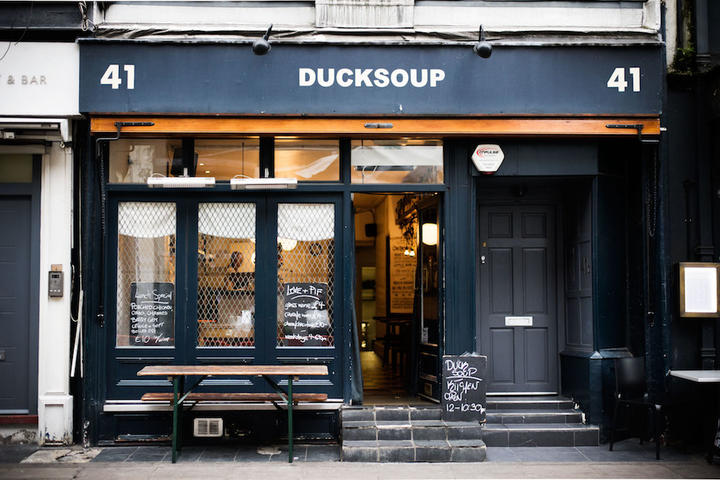
Clare Lattin (owner) and Tom Hill (executive chef) celebrate
simple, seasonal food in their constantly shifting menus. They
overflow with colourful, comforting dishes which hum with the
memories of their travels around the Mediterranean, the Middle East and South East Asia. On
Rawduck’s
brunch menu, hiitake dashi with poached eggs and tarka dhal
huddles up beside labneh with grilled aubergines. There are
(surprisingly delicious) drinking vinegars, fig, heather honey and
almond milk with turmeric, black pepper and ginger juice. And
lifesaver espresso martinis. In the evening, the menu offers
charred quail with curry tahini sauce, salted cod with bibier
chilli or buttermilk fried chicken with fermented soy. Over in
Soho, diners slurp oysters from their shells and feast on sharing
plates of slow-roasted lamb shoulder with artichokes, squid-ink
fettuccine and shaved fennel, mint and capers. They sip on natural
wines in an array of colours – gold, amber, peach. In both spots,
the wine list takes up an entire wall, scribbled on a chalkboard.
Clare and Tom were some of the first purveyors of natural wines in
London and are still some of the best. “Once you start drinking
natural wine, your taste buds change and you can’t go back.” Tom
tell us.
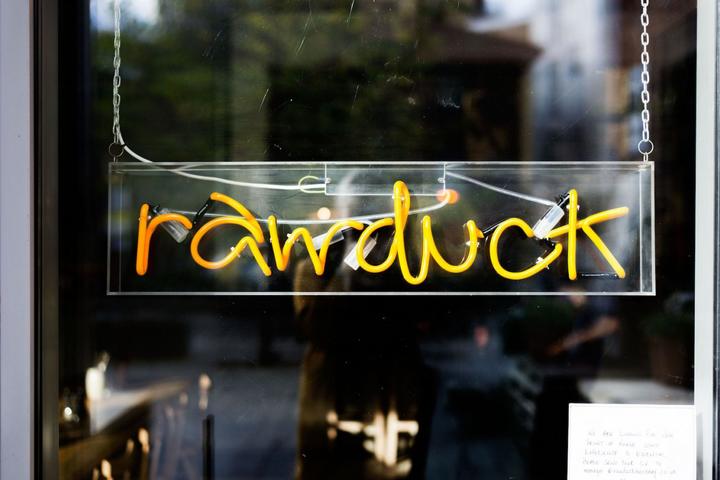
And now they have released their first book – Ducksoup Cookbook:
The Wisdom of Simple Cooking. It encompasses all that is
great about the two restaurants: a passion for fresh ingredients,
experimental cooking and conversation-starting flavours. It brings
Rawduck and Ducksoup’s signature dishes into the home, including
ferments, preserves, brunch dishes and comforting dinners. You
would have to have a pretty serious aversion to the kitchen to not
to want to throw on some kind of fabulous linen apron and get going
with these recipes right away. We popped into Rawduck to chat to
Clare and Tom about food, travel and the joys of fermenting.
Tom: Fundamentally our cooking is the same in
both restaurants – seasonally led and as simple as can be – we try
not to overdo the cooking process, allowing each ingredient to
speak for itself. You won’t find rich sauces overpowering the
flavours of the ingredients. The main point of difference is that
Ducksoup tends to be more Mediterranean focused, our menu often
follows blue skies and sunshine. But of course, in winter, we are
hearty and satisfying. At Rawduck, our inspiration comes from more
far-flung places and you’ll find flavours and seasonings from
Japan and India as well as the Med and
Middle East. A more healthful approach to cooking is perhaps more
apparent here, because we do a lot of fermenting which appears in
dishes on the menu, as well as making our own drinks such as fruit
kefirs, drinking vinegars and kombucha.
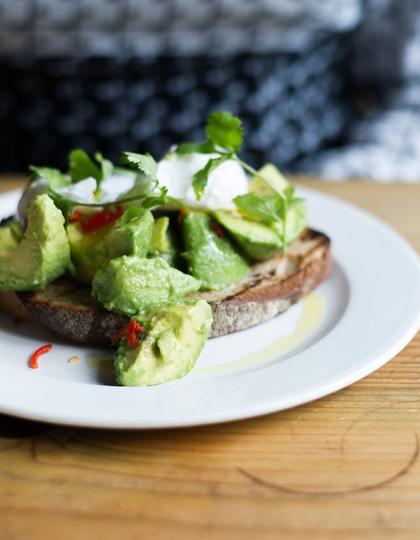
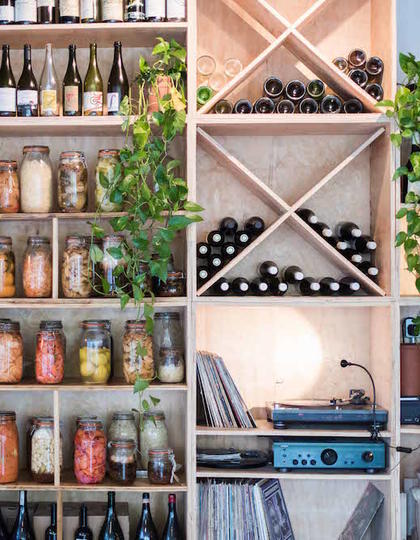
Clare: We travel a lot and take ideas from our
experiences, but never in a like for like way – we often take a
small element of a dish and turn it into something else. For
example, we were recently in Venice
and went out for morning chicchetti (small snacks often served on
bread) and we ate some delicious ingredient combinations. Tom took
these and turned them into his own dishes, a cold plate, warm salad
or risotto. Because our cooking is so uncomplicated and seasonal,
often the food in the restaurant comes from dishes that we’re
cooking at home. It’s very much an evolving thing; Tom changes the
menu weekly and it’s rare that anything makes an appearance twice,
which is something our customers have come to love. They really
enjoy being surprised by what Tom is cooking from week to week.
T: I don’t think it’s that recent, when you
look at someone like Fergus Henderson of St John. He’s been
celebrating locally sourced for over 25 years, as have many others.
But it is much more the norm now, as it should be. There are many
factors that have made the world a much smaller place – and we’ve
picked up many influences from how other countries do things, which
in turn has made us work with our own food suppliers and farmers in
a different and better way.
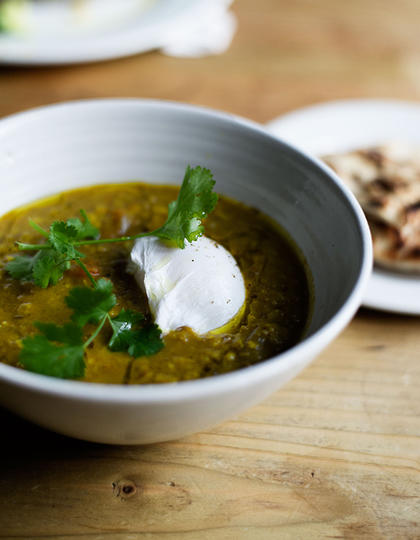
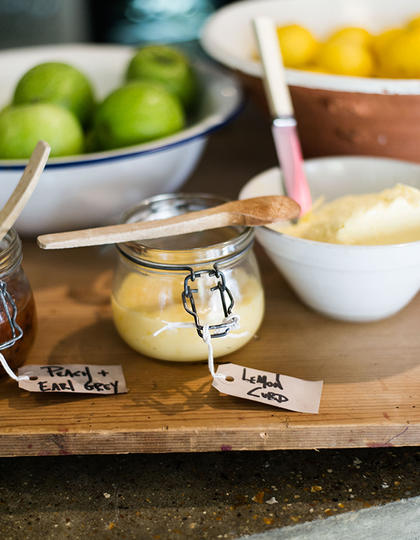
C: Originally it was the health benefits they
offered. We went to Japan and were totally inspired by their
incredible approach to pickled and fermented foods in their diet.
But at Rawduck, the fermenting is as much about the taste as the
health aspects – fermenting foods create such a surprising flavour
dimension. Few ingredients can touch on it. It’s like creating your
own mystery in the world of flavour.
C: Yes. I think a lot of people are astonished
by the difference from the non-natural stuff they’ve been drinking,
but in a totally good way. They are surprised that the flavour of
mass-produced wine is so far removed from the flavour of the
grapes. A natural wine is so full of expression, from the grapes to
how it was made and where it was grown. The natural wine movement
has moved on dramatically from when we first started selling them
five years ago.
T: Rent is probably the biggest factor –
although saying that East End rents and premiums are shooting up
rapidly. Customer spend is higher in Soho – being East we are a
neighbourhood restaurant so spend is expected to be lower. Other
than that, I would say predictability of trade. In Soho you can
pretty much bank on the pattern of trade, but in East you can’t so
much. It took us a solid 18 months to get a good handle on the
patterns. In Hackney our audience tends to be younger, although
both restaurants do share similar customers.
T: I think it comes back down to the world
being smaller and having access to how other countries do things.
Brunch is a big thing in America, New Zealand and Australia and all of these countries
have had a massive influence on the UK restaurant scene in the last
seven or so years.
C: It’s much faster and louder. It’s a light
space; simple, clean and modern, so it works really well at brunch.
Plus the communal tables are perfect for both families and large
parties. In the evening, the lights go down and the candles come
on. It’s more subdued.
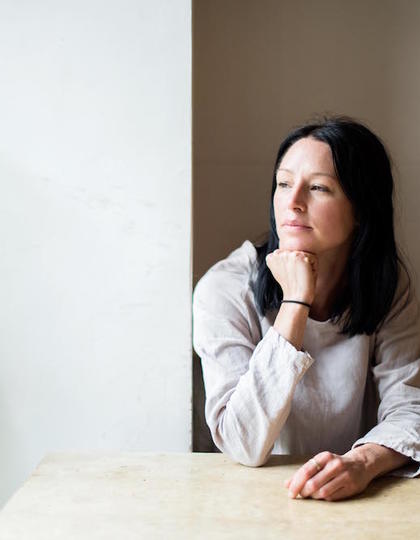
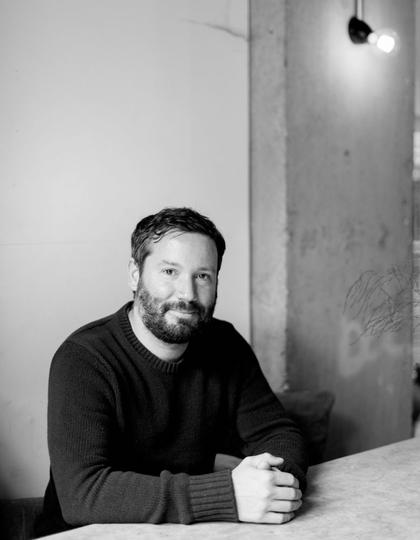
Brawn and 40 Maltby Street.
Aubert & Mascoli in Spa Terminal, Bermondsey.
Spa Terminal near Maltby Street, Borough Market, Natoora online.
There are also some fabulous Turkish greengrocers in Stoke Newington.
The guy who makes flatbreads in Ridley Road market. They’re just
flatbreads but there is no ‘just’ about them.
Conservatory Archives on Hackney Road.
Pavilion Café in Victoria Park.
Primeur in Highbury Fields.
The Marksman on Hackney Road.
Merlin Labron-Johnson at Portland and James Lowe at Lyles.
